December 25, 2023
Nikko is a two-hour train ride from Tokyo. Much of the town is a World Heritage Site. If one is to do it right, one should have at least two days with a night or two in an Onsen; however, I only had one day, and it was much too short.
Nikko Toshogu is a Shinto shrine that was established in 1617 to enshrine Tokugawa Ieyasu, who was the first shogun of the Tokugawa shogunate.
The main attraction in Nikko is the Shrine. It isn’t possible to photograph the amazing beauty of the place; one must see it to truly appreciate it.
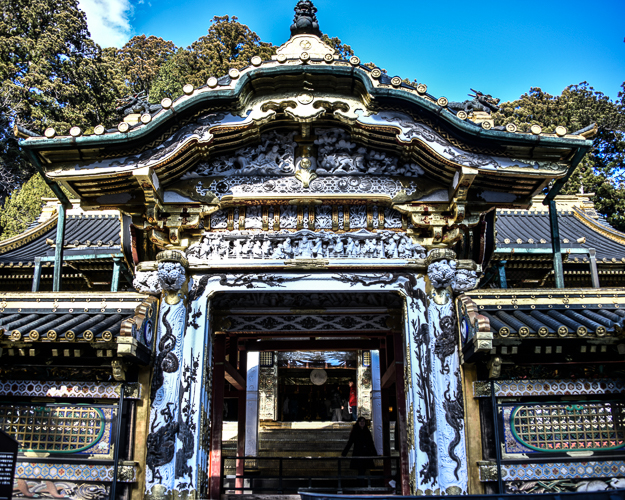
You will find over 5,000 sculptures in Nikko Toshogu Shrine, but the most famous and spectacular of them are on Yomeimon Gate. Yomeimon Gate highlights the most sophisticated sculpture and decoration techniques of the early 17th century. It is said that their combined beauty is allegedly so captivating that visitors would not get bored even if they spent a whole day looking at them—hence the nickname of Higurashi (all day long) Gate.
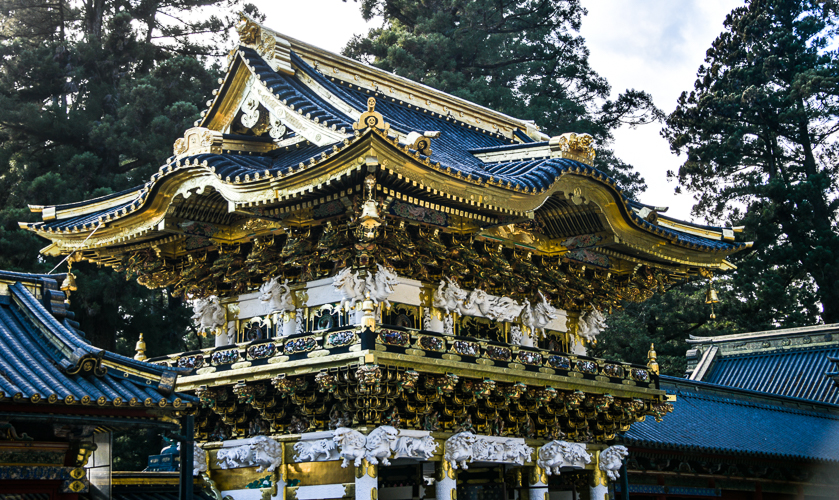
*
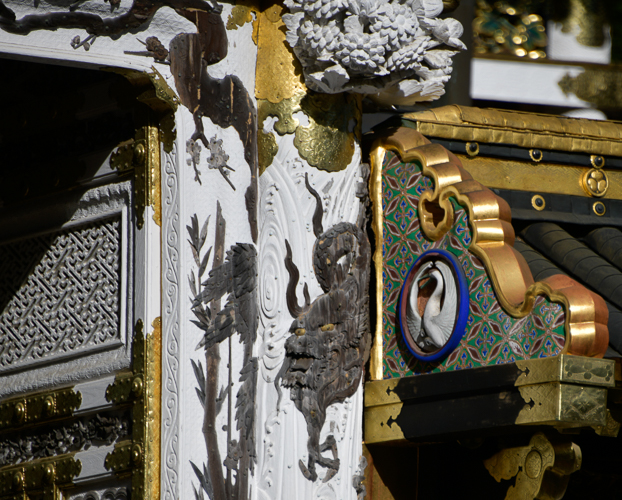 *
*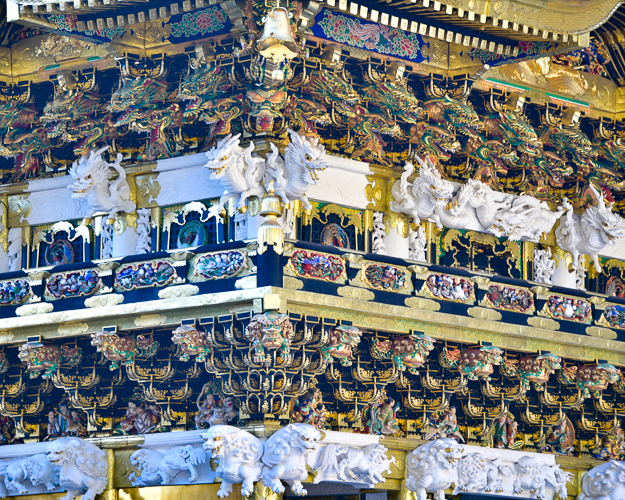 *
*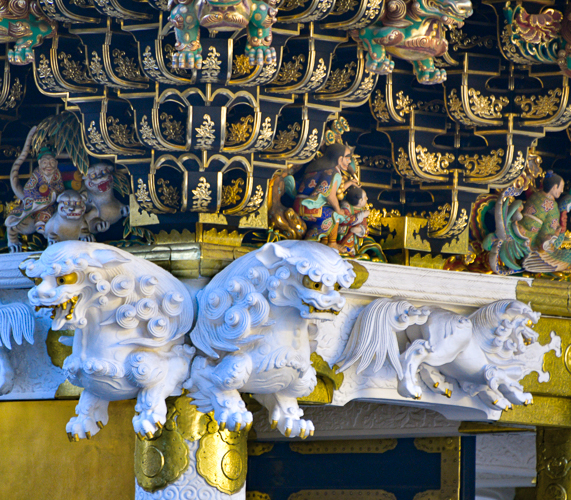 *
* 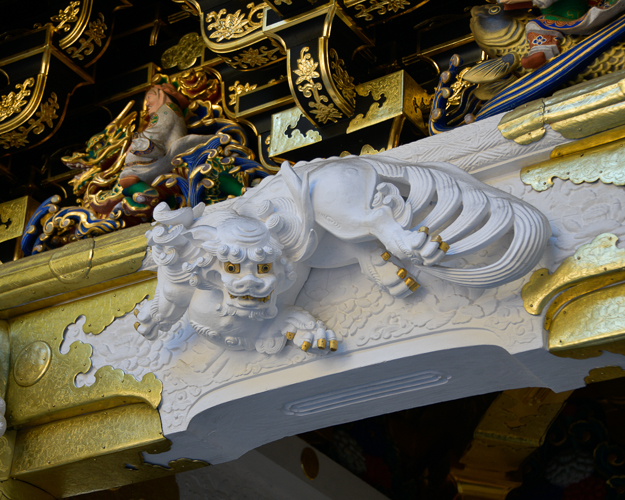 *
*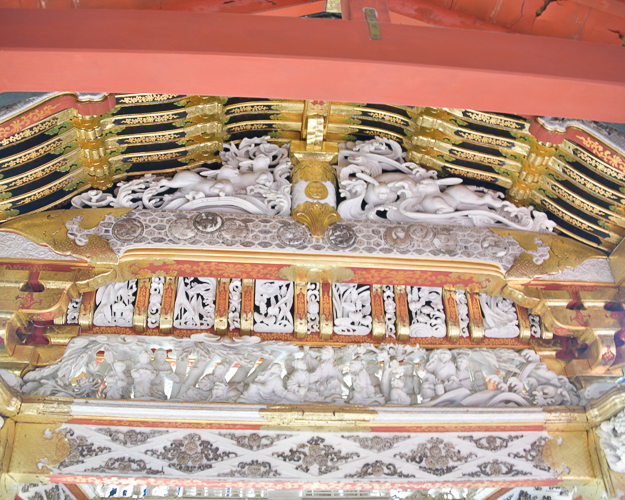
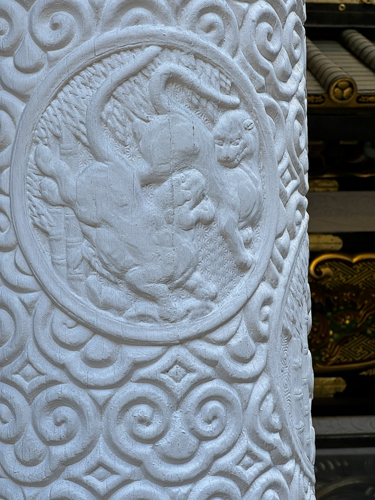
The Right Side Up Pillar
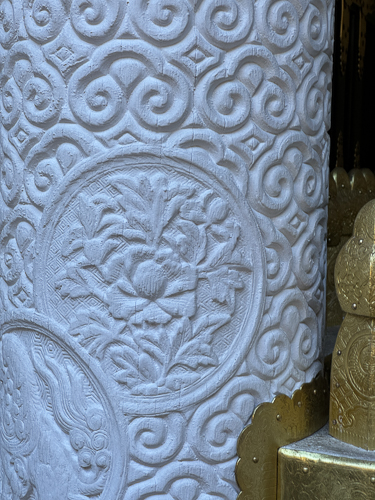
The Upside Down Pillar
The twelve pillars of the gate are carved with a repeating pattern called a guri mon that looks like curled fern leaves. The left-hand side pillar is intentionally upside down. An upside-down pillar is called a sakasabashira, and it is said to ward off evil. In Japan, it is said that the moment something reaches a state of perfection, it immediately begins to deteriorate. As a deliberate “mistake”, this sakasabashira prevents the Yomeimon Gate from ever reaching a state of perfection, thus being shielded from damage or collapse.
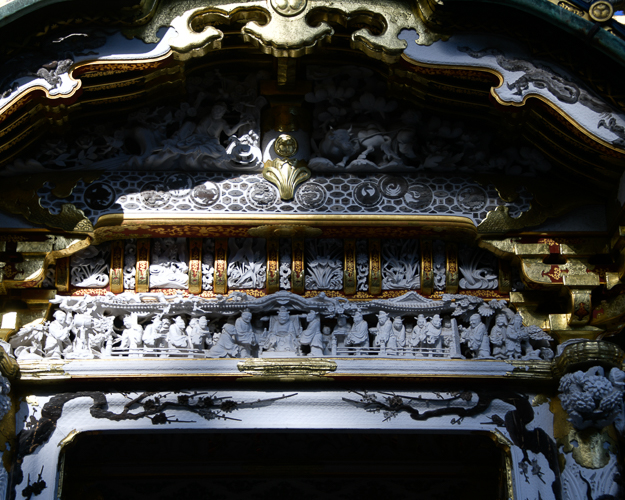 * *
* *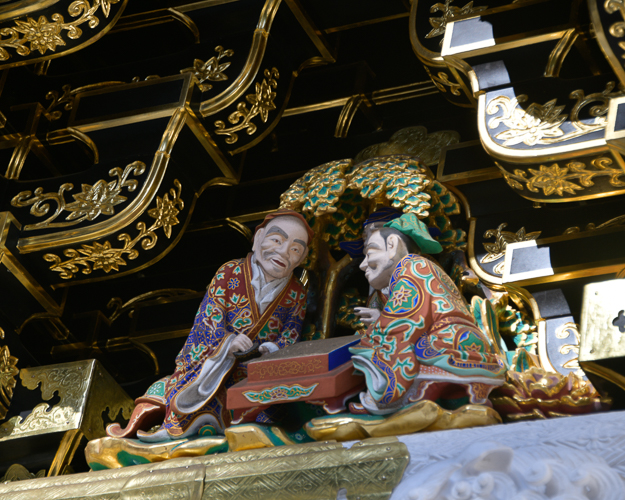
Other Sculptures within the Toshugo Shrine

On the gable of one of the Sacred Storehouses is a pair of black and white elephants sculpted by Kano Tanyu. They are covered with dense hair and have horn-like ears and long tails. Depictions of animals in Japanese art were often very stylized, but in this case, they were carved based only on verbal descriptions. The artist had never seen a real elephant.

The gate is flanked by imposing guardian figures, including the famous “Niomon,” which are two wooden statues representing Deva Kings. These fierce and majestic guardians are believed to protect the shrine from evil spirits and malevolent forces.
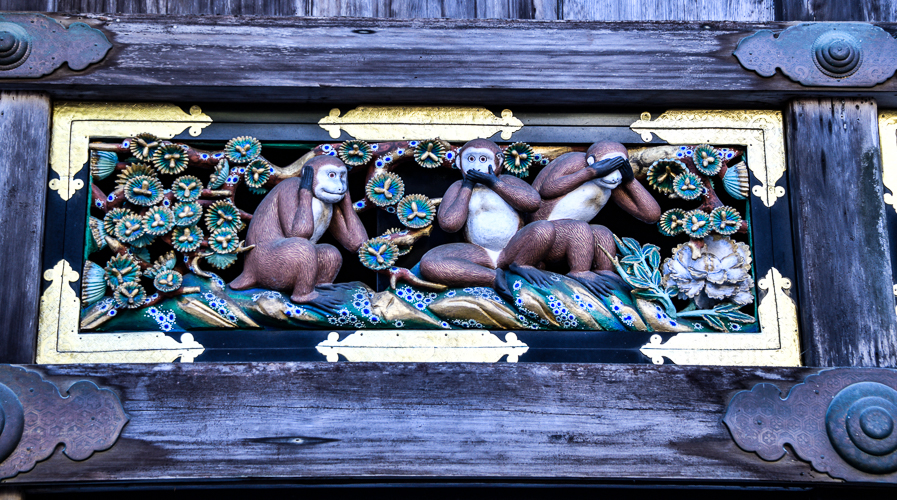
This plaque, along with others of Monkeys, adorn the Sacred Stable. This is “See no evil, hear no evil, speak no evil”. The names of the monkeys are Mizaru, Kikazaru, and Iwazaru. The ending “-zaru” is similar to the Japanese word for monkey.

This is Nemurineko, a carving of the Sleeping Cat surrounded by peonies. Despite its small size and modest appearance, this piece of art is a national treasure widely recognized in Japan. Carved by artist Hidari Jingoro (also the carver of The Three Wise Monkeys), his goal was to create a lifelike depiction of the cat rather than the more common deeply stylized animals. This approach led Japanese animal sculpturing in a new direction.
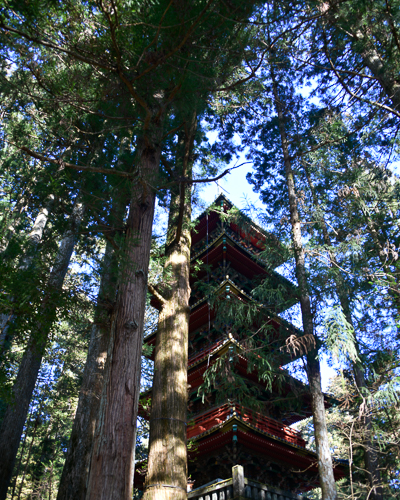
Five Story Pagoda, built in 1818
Tokugawa Ieyasu’s mausoleum
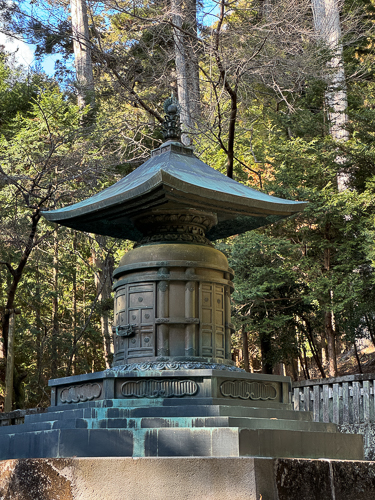
After a climb of 207 steps, you reach the pagoda that holds Lord Tokugawa Ieyasu’s remains. The current pagoda is made of an alloy of gold, silver, and copper. It was made in 1683 to replace the first wooden and then later stone version. The Shogun was interred here in 1617, and the grave has never been opened.
Why all the fuss? Tokugawa Ieyasu was the founder and first shōgun of the Tokugawa Shogunate of Japan, which ruled from 1603 until the Meiji Restoration in 1868. He was one of the three “Great Unifiers” of Japan, along with his former lord Oda Nobunaga and fellow Oda subordinate Toyotomi Hideyoshi.
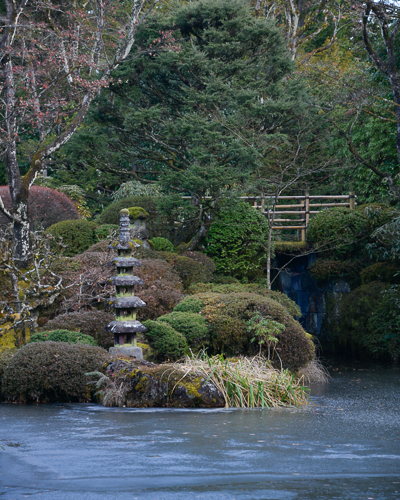
There is a garden behind the Museum in the Toshogu Shrine Complex. The lake had already begun to freeze, and the temperature hovered around 40 degrees Fahrenheit all day. It was Christmas day. – I would love to see it in the Spring.
There is so much more to the Toshuga Shrine Complex, but this was the highlight. I also wanted to take time to tour the Tamozawa Villa, which will be another post. – As I mentioned, one should really have at least two days. I missed so much, and yet I walked well over seven miles.